The Peripheral Region of the Cortex-M memory map provides access to the peripheral devices integrated into the microcontroller. A peripheral device is a specialized hardware component within the microcontroller that performs a specific function. Examples include an I/O port, which can control voltage levels on a pin, or a timer, which can measure the time between software events.
Microcontroller manufacturers define a custom set of peripheral devices tailored to the target application domains of their products. The selection of peripherals depends on the market segment the microcontroller is designed for—such as consumer electronics, automotive systems, industrial automation, medical devices, telecommunications, aerospace, or defense.
Although all ARM-based microcontrollers share a common instruction set in their processing cores, the peripheral devices mapped into the Peripheral Region are designed by individual manufacturers and vary across vendors. While many peripherals follow standardized communication protocols like I²C to promote interoperability, the register sets used to interface with these peripherals are typically proprietary and unique to each manufacturer.
Writing applications for a microcontroller requires firmware engineers to interact with and control the peripheral devices mapped in the Peripheral Region of the memory. To do this effectively, engineers rely on the technical reference manuals provided by the microcontroller manufacturers. These documents contain detailed information about each peripheral, including register addresses, functional descriptions, and bit-level definitions. This information is essential for configuring and using the peripherals correctly in firmware.
Let’s use the following memory map to help illustrate how embedded firmware can be written to interact with peripheral devices.
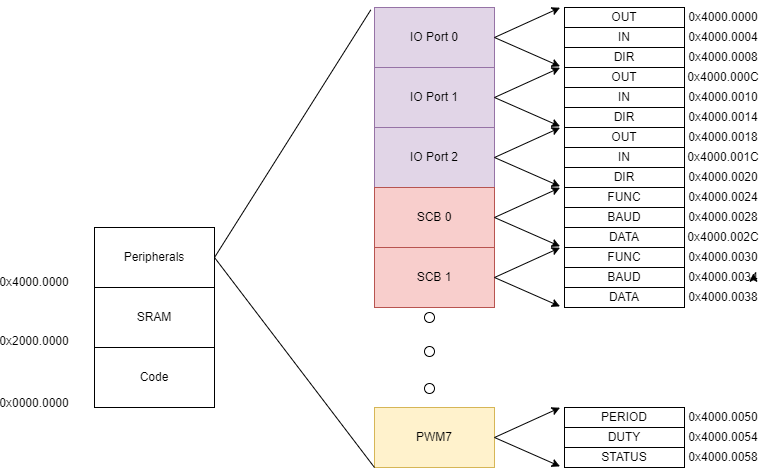
In this example memory map, we see several types of peripheral devices, including I/O ports, serial communication blocks, and pulse-width modulation (PWM) modules. Each peripheral type includes a set of memory-mapped registers used to configure its behavior, monitor its status, and perform operations.
Because each peripheral serves a different function, the structure and purpose of its registers vary. For instance, an I/O port might have registers to set pin direction and output values, while a serial communication block might include registers for baud rate configuration and data transmission. Understanding the layout and function of these registers is essential for writing firmware that correctly interfaces with each peripheral.
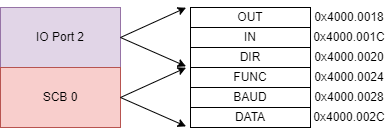
Every register in the memory map will be assigned a unique address. One way to give a firmware designer access to each of the registers would be to define macros for each register. This is sometimes called register level programming.
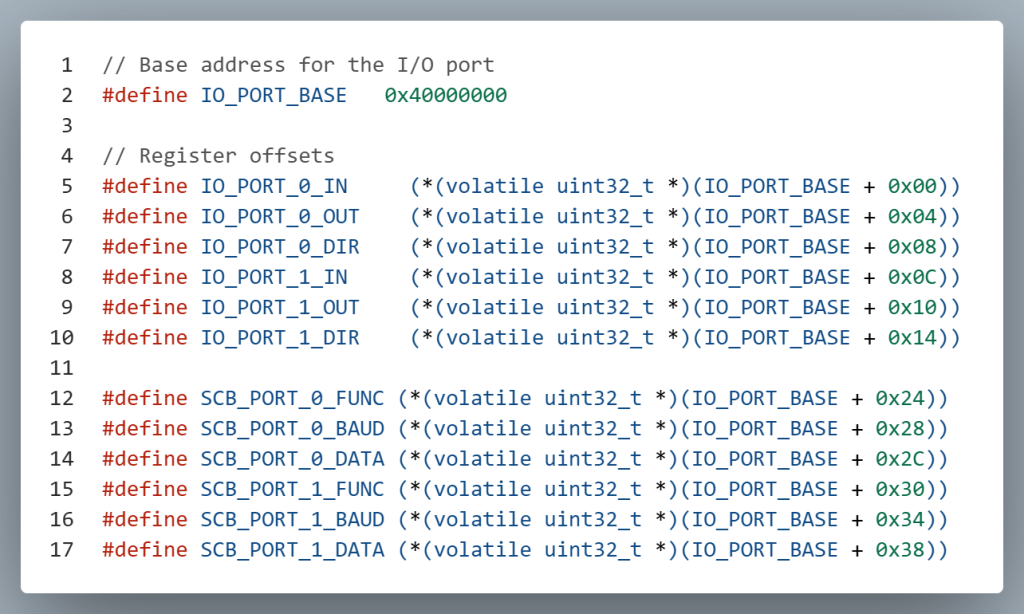
You might be wondering how register macros work in embedded C. The expression (volatile uint32_t *) casts a raw memory address into a pointer to a 32-bit unsigned integer. This allows the firmware to read from or write to that specific memory-mapped register.
The volatile keyword plays a critical role here. It tells the compiler not to optimize accesses to the variable, because its value can change unexpectedly—outside the normal program flow. This is especially important in embedded systems, where hardware events like timers, interrupts, or sensor inputs can modify register values at any time.
Without volatile, the compiler might assume the register’s value remains constant unless explicitly changed by the program. As a result, it could optimize away repeated reads or writes, leading to incorrect behavior. By marking the pointer as volatile, we ensure that every access to the register results in an actual read or write to the hardware, preserving the intended interaction with the peripheral.
Using the macros above, it would be possible to read and write to any of the registers in the register map.

A common approach in register-level programming is to take advantage of the fact that each instance of a peripheral device typically shares the same register layout. This allows developers to define a struct in C that mirrors the register structure of the peripheral. By mapping this struct to the base address of the peripheral, firmware can access and manipulate the registers using familiar field names, improving code readability and maintainability.
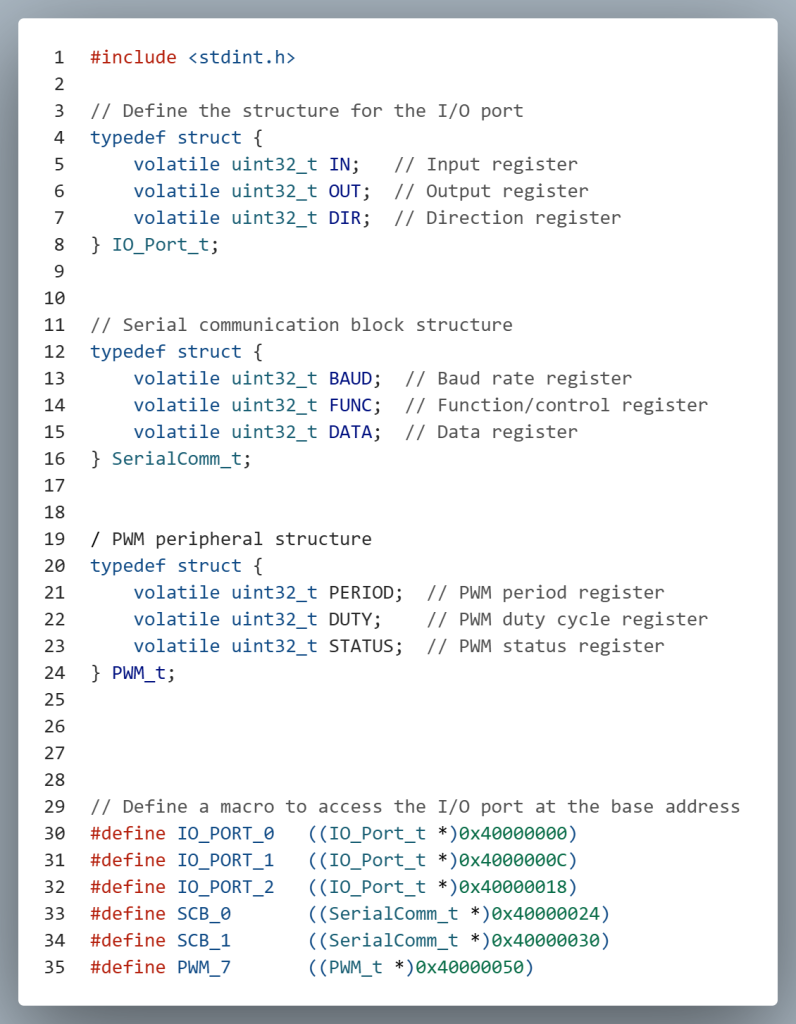
By combining these struct definitions with the base addresses from the memory map, you can create macros or constants that modularize access to each peripheral instance. This approach improves code organization and makes it easier to scale your firmware across multiple peripherals of the same type.
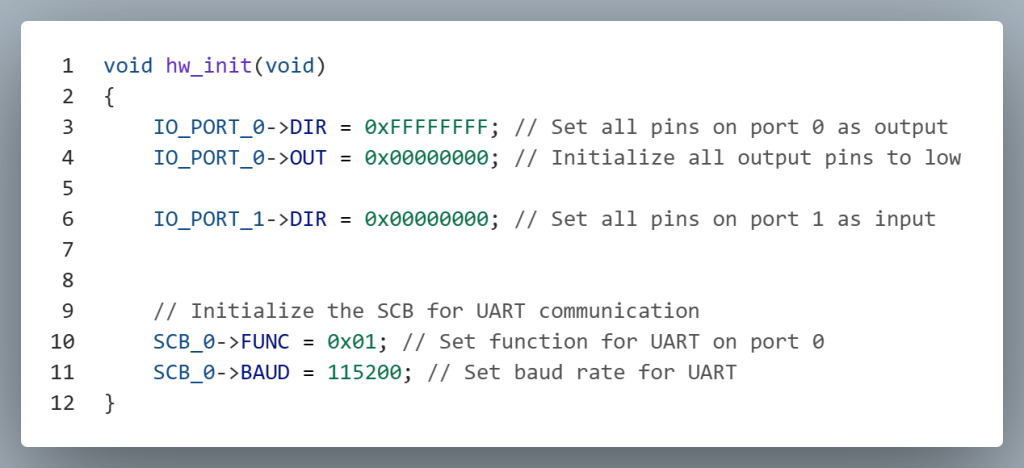
Most microcontroller manufacturers provide pre-defined structs and macros for peripheral base addresses as part of a Board Support Package (BSP). These resources help developers accelerate their development by offering ready-to-use, well-tested definitions. Using BSP-provided macros reduces the risk of errors—such as referencing incorrect register addresses—by minimizing manual entry and improving code consistency.